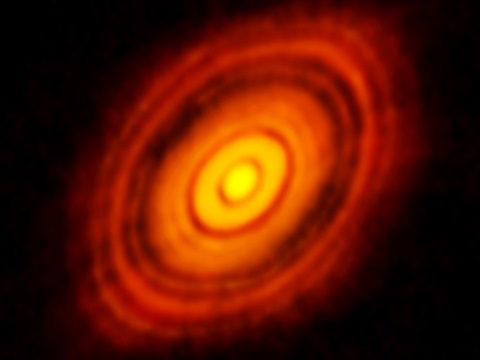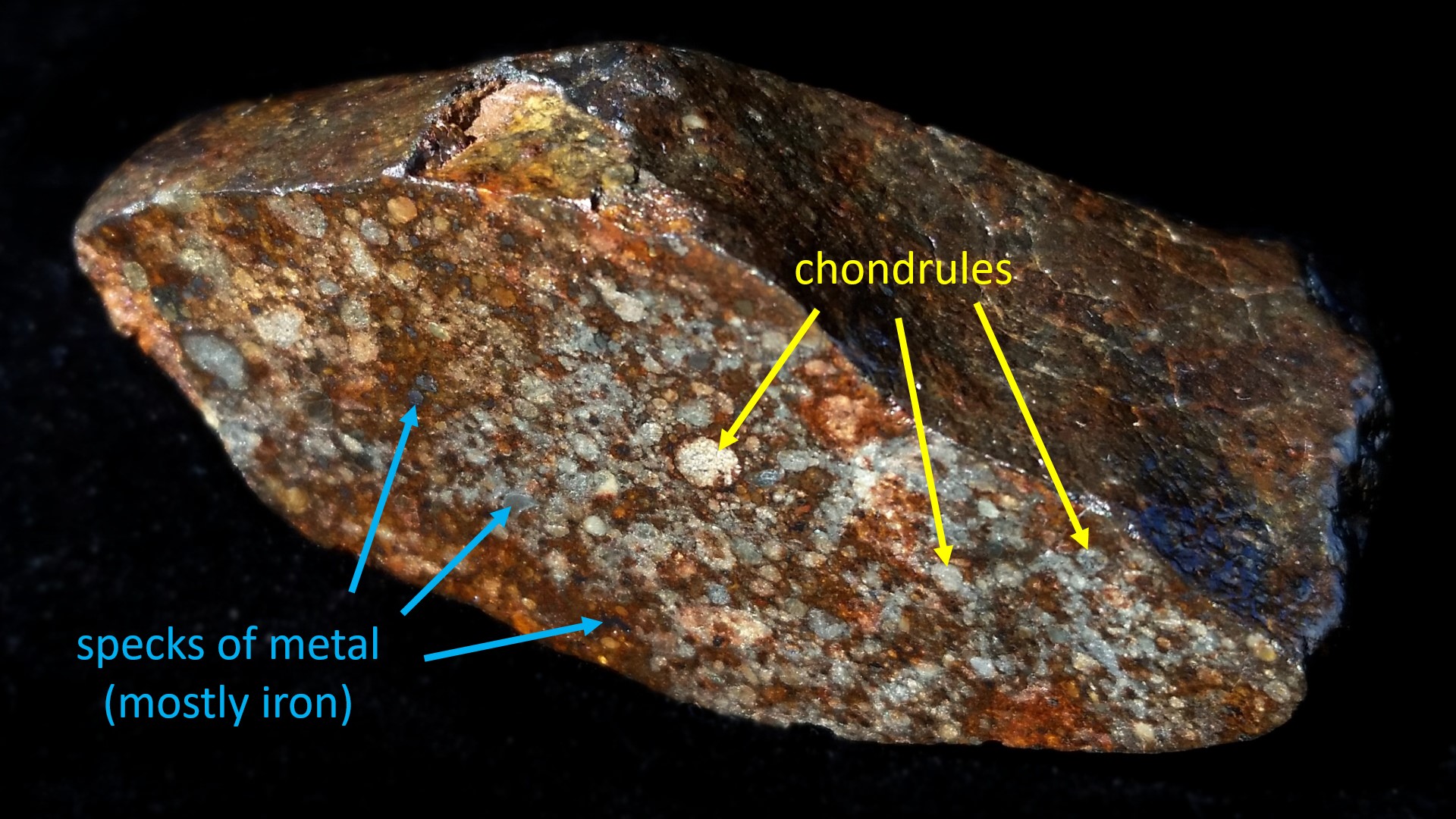The Formation of Planetary Systems
O Lord, you are my God; I will exalt you and praise your name, for in perfect faithfulness you have done marvelous things, things planned long ago. (Isaiah 25:1, NIV)
If the Big Bang model is correct, most of the chemical elements we find on Earth did not exist when the first stars began to shine. As explained earlier in this chapter, the period of nucleosynthesis that occurred a few minutes after the Big Bang produced only the lightest elements: mostly hydrogen, some helium, and little of anything heavier. Hydrogen and helium provide excellent fuel for stars, but a life-supporting planet could not form from just those gases. Earth is built from sturdier materials. Chemical compounds of oxygen, silicon, and various metals comprise most of our planet’s crust and mantle. Earth’s core consists almost entirely of iron and nickel. Although these heavy elements were not produced in the Big Bang, they are generated in large quantities during supernovae explosions. Spectral lines in the light from supernova remnants (like the Crab Nebula, shown on the previous page) reveal the presence of oxygen, silicon, iron, nickel, and many other elements found in abundance on Earth.Here is an example of one such spectral analysis. Our planet—indeed, our whole solar system—is made of the smoke from celestial fireworks!

The Atacama Large Millimeter Array (ALMA), an array of radio telescopes in the Atacama desert of northern Chile, captured this stunning photo of a protoplanetary disk around the star HL Tauri, 450 light-years away. The dust is aglow with radio wavesSince radio waves are outside the visible spectrum, the photo has been converted to red and yellow color. emitted from the star; the dark rings are regions where newly forming planets have swept most of the dust away.
According to the prevailing theory, the formation of our solar system began with the collapse of a huge nebula, which had been enriched with dust from thousands or perhaps millions of supernovae that occurred in the early history of our Milky Way Galaxy. Parts of the nebula formed new protostars, and one of those protostars eventually became the star we call the sun. Meanwhile, some of the remaining dust and gas from the nebula flattened into a disk—called a protoplanetary disk—swirling around the sun. (Protoplanetary disks are thought to form via a process similar to the formation of a spiral galaxy, but on a much smaller scale.)
Within the protoplanetary disk, bits of dust began sticking together in larger particles and clumps, analogous to hailstones forming in a storm cloud. The clumps of matter grew larger as they orbited the sun and collected more dust from the protoplanetary disk. Eventually, some clumps accumulated enough matter to become planetesimals, objects with sufficient mass to pull in dust by their own gravity. The planetesimals grew more rapidly, sometimes colliding with each other and merging to form even larger objects called protoplanets—bodies of matter with so much mass that their interiors started to melt from the heat of gravitational compression. The largest protoplanets melted enough for gravity to mold them into spheres.
A spherical body orbiting the sun is called a planet if its gravity is strong enough to clean up any remaining planetesimals near its orbit; otherwise, it is called a dwarf planet. The International Astronomical Union (IAU) drew this distinction between planets and dwarf planets in its 2006 resolution on the definition of the term ‘planet,’ which is why Pluto is no longer considered a planet: it has not cleared the debris near its orbit. Ceres, Eris, Haumea, and Makemake also count as dwarf planets by the IAU definition. The sun has eight planets and at least four dwarf planets in orbit around it. Hundreds of other objects discovered in our solar system might also turn out to be dwarf planets, but our telescopes aren’t powerful enough to resolve their shape, so we don’t yet know whether they are spherical enough to be classified as dwarf planets.Astronomer Mike Brown, professor of planetary astronomy at the California Institute of Technology, has compiled a list of potential dwarf planets here. Some of them may be planetesimals or protoplanets that never grew large enough to become spherical.

Over half a million asteroids have been identified so far, and there may be millions more. According to recent estimates, between one and two million asteroids are larger than a kilometer in diameter.See here for more information about asteroids. NASA’s Galileo space probe snapped this photo of an asteroid named “243 Ida” in 1993.
Our solar system probably formed around five billion years ago. That estimate is based on evidence from meteorites—rocks that have fallen to Earth from space. Some meteorites are fragments of asteroids, huge boulders thought to be planetesimals or protoplanets left over from the solar system’s formation. Most asteroids orbit the sun in a region called the asteroid belt, which lies between the orbits of Mars and Jupiter. Planetesimals in this region never coalesced into planets,The lone exception is Ceres, the only dwarf planet in the asteroid belt. because their orbits are perturbed by the gravitational pull of Jupiter. Jupiter’s strong gravity flings them into irregular orbits, sometimes causing asteroids to crash into each other at high speeds, so they shatter rather than gently merging. Small fragments from those collisions occasionally wander all the way to Earth and plummet to the ground, where we can find and analyze them. The ages of some meteorites have been measured by radiometric dating (e.g. the uranium-lead method described previously), and the oldest specimens apparently formed around 4.6 billion years ago.See Audrey Bouvier and Meenakshi Wadhwa (2010), “The age of the Solar System redefined by the oldest Pb–Pb age of a meteoritic inclusion,” Nature Geoscience, 3: 637–641. Available here. If these rocks really are fragments of planetesimals from the birth of our solar system, then our solar system itself must be approximately the same age.

This meteorite has been cut open to reveal the chondrules inside, which consist mainly of silicate minerals like olivine. In addition to chondrules, a chondrite often contains specks of iron that haven’t oxidized (rusted) because they haven’t been exposed to Earth’s oxygen-rich atmosphere for long. This makes them easy to distinguish from terrestrial rocks, which don’t contain iron in its metallic form.
Meteorites also provide clues about how planets form. There are several types of meteorites. The most common are chondrites—meteorites containing round grains called chondrules. These meteorites are believed to come from planetesimals or asteroids that never grew large enough to melt and differentiate into layers of different densities. In other words, these meteorites are made of particles of dust and debris from the nebula that formed our solar system! The tiny, round chondrules apparently formed as molten droplets in the early solar system, though no one is sure exactly how they became molten. One hypothesis is that they coalesced like raindrops from dust that melted in the hot inner region of the solar nebula as the sun was forming. These droplets later cooled, hardened, and eventually accreted onto a newly-forming planetesimal, where they fused together to form chondritic rock. Some of this rock was broken apart by collisions and scattered back into space; these fragments occasionally land on Earth as meteorites.
Less common are iron meteorites, which are made of solid metal: an alloy consisting mostly of iron and nickel, usually with small amounts of cobalt and other heavy metals. Iron meteorites probably originated from the cores of planets or protoplanets that were destroyed by collisions. As the interior of a protoplanet melts from the heat of gravitational compression, dense metals like iron and nickel sink to the middle and form a core of metal alloy, while lighter minerals float toward the surface. (Earth’s core is presumed to consist of a similar iron-nickel alloy.) Evidently, at least one planet or protoplanet in our solar system was destroyed by a massive collision—probably with another protoplanet—after its metal core had already formed. So, if this theory is correct, iron meteorites are fragments of the shattered core of a planet or protoplanet that was demolished billions of years ago.
Although our solar system formed long ago, many other planetary systems are still in the process of forming today. We can see it happening now! Protoplanetary disks have been discovered around some young stars, like the star HL Tauri in the constellation Taurus. Nestled inside one of the nearest star-forming nebulae, HL Tauri formed less than a million years ago.According to one estimate, it may be only 100,000 years old. (See Boss, Morfill, and Tscharnuter (1989), “Origin and Evolution of the Solar Nebula,” in Origin and Evolution of Planetary and Satellite Atmospheres, Atreya, Pollack, and Matthews (eds.), Tucson: University of Arizona Press, p. 45.) More recent estimates put its age closer to a million years. (That’s young for a star!) The photo near the top of this page shows its protoplanetary disk. The dark rings in the disk are regions where newly-forming planets are sweeping up the dust as they orbit the star.